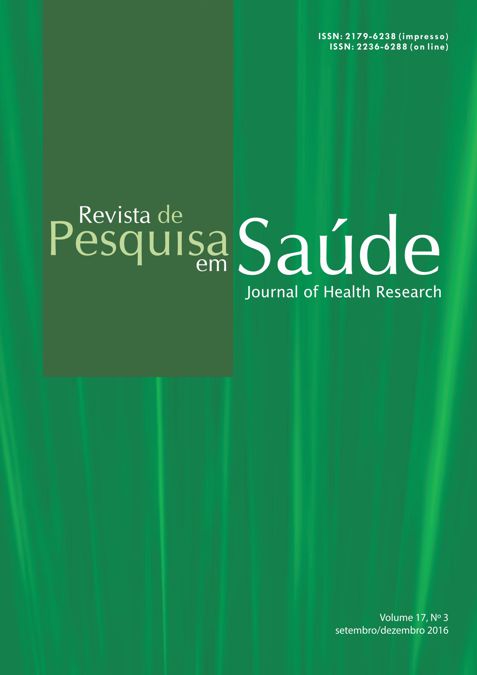FREQUÊNCIA E FATORES ASSOCIADOS À ATIVIDADE FÍSICA NO LAZER ENTRE ADULTOS NO BRASIL E NA AMAZÔNIA LEGAL: ESTUDO DE BASE POPULACIONAL / FREQUENCY AND FACTORS ASSOCIATED WITH LEISURE PHYSICAL ACTIVITY AMONG ADULTS IN BRAZIL AND IN THE AMAZON: POPULATION-BASED STUDY
Resumo
Introdução: A prática regular de atividade física tem sido recomendada como importante estratégia de promoção em saúde,
mas a inatividade física ainda permanece alta em várias regiões. Objetivo: Investigar a frequência e fatores associados à atividade
física de lazer nas regiões brasileiras e nos estados que compõem a sua Amazônia legal. Métodos: Trata-se de um estudo
transversal baseado num inquerido domiciliar de residentes de todas as regiões do Brasil, realizada em 2008 pelo Instituto
Brasileiro de Geografia e Estatística (IBGE). Utilizou-se uma amostra de 186.424 indivíduos com idade entre 20 e 59 anos. A
variável dependente foi atividade física de lazer. Resultados: A frequência da AFL no Brasil foi de 13,8% e entre os estados da
Amazônia legal foi de 10,8%. A AFL no Brasil foi maior entre as mulheres na idade entre 20 a 29 anos e na Amazônia legal foi
entre os homens. Independente da região, quanto maior a renda, escolaridade e autoavaliação de saúde maior a frequência de
atividade física de lazer. Conclusão: Atividade física de lazer é menos praticada por pessoas com maior vulnerabilidade socioeconômica
e pelos moradores da Amazônia Legal, mesmo que eles tenham os mesmos níveis socioeconômicos dos moradores
do Brasil.
Palavras-chave: Atividade motora. Fatores Socioeconômicos. Estudos Transversais. Desigualdades em Saúde.
Abstract
Introduction: Regular physical activity (RPA) has been recommended as an important health promotion strategy, but physical
inactivity remains high in several regions. Objective: To investigate the frequency and factors associated with leisure RPA in
Brazilian regions and states that make up its legal Amazon. Methods: This is a cross-sectional study based on a populationbased
survey in residents of all regions of Brazil, conducted in 2008 by the Brazilian Institute of Geography and Statistics (IBGE,
in Portuguese). We used a sample of 186,424 individuals aged between 20 and 59 years. The dependent variable was leisure
RPA. Results: The frequency of leisure RPA in Brazil was 13.8% and among the states of the Amazon region was 10.8%. The leisure
RPA in Brazil was higher among women aged between 20 to 29 years and in the Legal Amazon was among men. Regardless
of the region, the higher the income, schooling and health self-assessment the frequency of leisure RPA. Conclusion: Leisure RPA
is less practiced by people with higher socioeconomic vulnerability and by the inhabitants of the Amazon, even if they have the
same socioeconomic status of the residents of Brazil.
Keywords: Motor Activity. Cross-Sectional Studies. Socioeconomic Factors. Health Inequalities
Downloads
Downloads
Publicado
Como Citar
Edição
Seção
Licença
Direitos autorais Revista de Pesquisa em Saúde
Este obra está licenciado com uma Licença Creative Commons Atribuição-NãoComercial-SemDerivações 4.0 Internacional.


